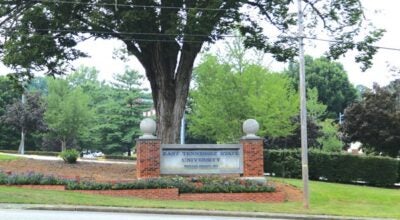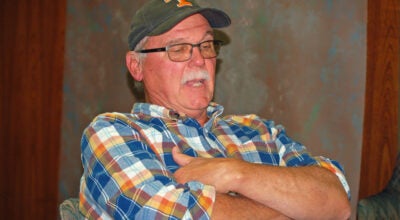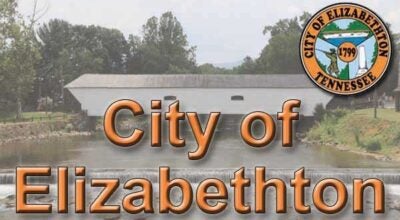Elizabethton Walking Tour provides window into city’s past
Published 9:51 am Monday, June 27, 2016
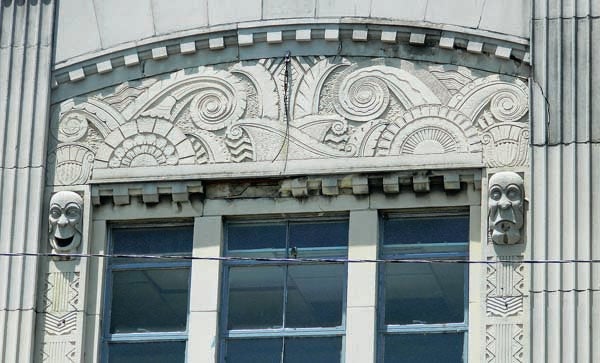
Star Photo/Victoria Perkins
The intricate designs on the font of the Birchfiel building, once home to the Ritz Theater, include the classic Comedy and Tragedy mask.
BY LORA CARDWELL AND VICTORIA PERKINS
STAR INTERNS
Our latest adventure was back to downtown, but this time we went on the Elizabethton Walking Tour.
We actually drove a around a little, and were yelling directions at each other because we didn’t know how to read the map. We do now!
The walking tour consists of 30 sites ranging from houses to old theaters and churches. We took photos at each site, although we didn’t have time to find them all. Each place is unique and rather extravagant.
We didn’t start with Number One, like we should have, we started with the S.H. Kress building (Number 28) and the Ritz Theater (Number 27).
The S.H. Kress Building was designed by a man named George E. MacKay, and was constructed in 1929. The Ritz Theater was one of the four original theaters in Elizabethton. A local contractor constructed the building in the late 1920s. When you look at it you can see the masks of comedy and tragedy in the exterior design work. The Theater now houses a few different establishments including Farmers Insurance Group B. Montgomery Agency, Carter County United Way, and the Gray Law Firm. After we got our pictures from these places we went and got the car.
Across the road and around the corner we drove, and went to the Bonnie Kate (Number 29) and the Antique Fire Engine (Number 30).
Most people know about the Bonnie Kate Theater. Many people from this area, and many more have so many good memories from the Bonnie Kate. Almost every one who was born before 2012 has been in the Bonnie Kate. In 2014 they tore down the sheetrock wall which allowed it to become a place where people could throw parties, show live music, and so much more. It was formally opened on May 16, 1926.
The 1921 T Model fire engine displayed at the Elizabethton Fire Department carried chemicals rather than water. It was the first fire truck ever purchased by the Fire Department and it still runs. Several years ago some firemen and their friends restored it to its current condition.
We chose to go to St. Thomas Episcopal Church (Number 16) next. It was formerly known as Southern Methodist Church. The building began in 1861, was interrupted by the Civil war, and was completed in 1867. The bricks it was built with were hand made on site.
Next we went by the Rhudy House (Number 1). Capt. L.H Rhudy and his wife, Carrie Dungan Rhudy, built the brick house in 1894, and it remained in the family until 1992. The house is made with solid brick both inside and out. Although it has been remodeled, the interior still retains most of the original oak and maple woodwork and eight of the original ten fireplaces. Also, two other buildings remain on the property: a four-person, two-door brick outhouse and the carriage house which was turned into a small residence.
The Range House (Number 3) is a beautiful blue house that captures your attention when you go past. It was owned by former Gov. Robert L. Taylor in the 1880s and was built by Dr. Abraham Jobe.
Hunter Cottage and Franklin House (Numbers 5 & 6) were are next stops. Both houses were built by Dr. E.E. Hunter for his children in 1901-1902. One house has two fountains, one at the front of the house and one on the side, and beautiful landscaping that flatters the building.
Duffield Academy (Number 18) was established in 1806 and was originally built near the Doe River around 1809 and was the first school in Elizabethton. A new building was built in following the Civil War and was renamed Davies Academy. It was used as an elementary school by the Elizabethton City School System for a short time. It is now the Carter County Board of Education.
The old “Girls’ Academy” (Number 10) is one of the oldest sites of the tour and little is known about it. The Elizabethton Female Seminary organized sometime during the 1830s. It is thought to have been a private subscription school since there are no records found of it getting support from the state. It couldn’t have lasted later than 1853 when the law required Duffield Academy admit girls.
The Carter County Courthouse (Number 14) was built during the 1850s and has been altered countless times. In 1901 it made it through severe wind damage and flooding.
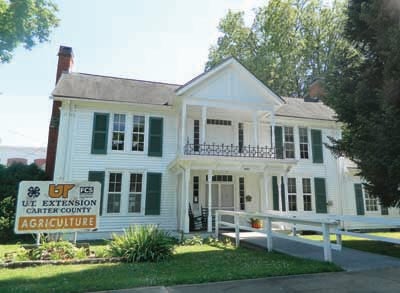
Star Photo/Victoria Perkins
Once home to Confederate Army Major H.M. Folsom, this historic residence now houses the University of Tennessee Extension Office for Carter County.
The Folsom House (Number 12) is a clapboard-sided house that was built by Henderson Folsom around 1861. Folsom was an officer in the confederate army, a teacher of the law, and a lawyer. The Frasier Fir (Number 12a) is 78 feet or more in height. It is visible from several miles in any direction. The tree was one of two planted by H.M. Folsom. During the Christmas of 1988 the tree was first decorated, and since then it has become an annual celebration.
The Soldier’s Monument (Number 15) was constructed in 1912, and in 1913 was dedicated to the memory of soldiers from the Revolution to that time. The base is 20 feet wide and it stands 60 feet tall. In 1989 it was refurbished and dedicated to Carter County soldiers serving in all wars.
In the late 1930s Banks Law Office (Number 20) was built on top of an older foundation. What sat on this foundation was the tavern where it is said that Andrew Johnson took his last drink. Later on that night he passed from a stroke at his daughter’s house.
The Sycamore Tree (Number 9) is where the first republic established west of the Appalachians —The Watauga Association —was formed in May 1772. Local legend also holds that Andrew Jackson may have also held court either under the tree or in a house nearby. The famous tree was cut down in 1987 after efforts to save it failed.
Editor’s Note: A brochure on the Elizabethton Walking Tour, which includes a map, is available for free at the Elizabethton/Carter County Chamber of Commerce for those would like to enjoy the tour.


